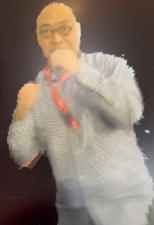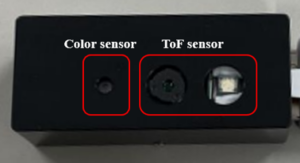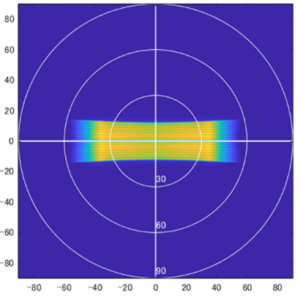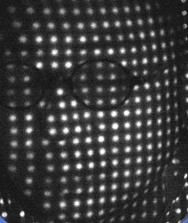All in one ultra small ToF+RGB sensor package
powered by Scivax Platanus™ and Ardisia™

Application
- Real Avator
A portable 3D color image creation system called “360° real avatar generator”, which enables to capture 360° region surrounding an object and display 3D color image with a low latency in real-time. The system is applicable to web meeting, gaming, creating a 3D studio at home for SNSs, expecting to expand drastically 3D sensing applications.


Key Features
On virtual worlds, avatars are useful as icons to identify a personal information. In cases of business use, gaming, SNSs, etc., more real visual is strongly desired to obtain a feeling of the immersion. To obtain that, SCIVAX is focusing to create “real avatar” by fusion of 3D depth and color information in real-time. Above is the product picture. Depth and color image sensors are placed within a footprint of 50×17 mm. We selected a ToF system with SCIVAX’s Platanus light diffuser on IR laser as a depth sensor because of low latency enabling real-time 3D image drawing. Depth and color information taken by the 3 modules set at surrounding the object is transferred immediately to PC. SCIVAX’s high speed avatar algorithms generate 3D mesh structures and adapts color information in real-time. The other picture is a real avatar image taken from the module and the algorithms.
- Lidar
We demonstrate a new flash-LiDAR satisfying both of low-power-loss and wide-angle driving. The LiDAR has a new optics driven by electric scanning system without any mechanical function. Line shape IR light is generated through our lens product called Platanus with a field of illumination (FOI) of 90°x3°. By scanning the LiDAR system, the FOI becomes about 90°x40°. In comparison with usual optics 90°x40°, the line intensity is over 10 times higher, therefore, total power loss in the LiDAR system is lower than that of usual optics cases at the same measurable distance. The unique system matches strongly wireless devices such as AR/VR/MR devices.

Key Features
AR/VR/MR devices require wide outer information for furniture, obstacles, peoples, etc. to use safety those devices without any accidents. Usually, Simultaneous Localization and Mapping (SLAM) is applied to the device. For SLAM, 3D information for those objects is must and LiDAR sensor plays an active role in taking that. However, in AR/VR/MR system, there is a limitation of an electric power when these devices drive at wireless, thus, the system with low-power-loss wide-angle is strongly desired. We propose, low-power-loss and wide-angle flash-LiDAR with mechanical function free scanning system. The main components are a Platanus light shaper to create a FOI of 90°x3° and a switchable VCSEL. By changing illumination position on the VCSEL, the shaped light is moved from -20° to 20° along the vertical axis, as shown in the picture above one line intensity is over 10 times higher than usual optics with a FOI of 90°x40°, therefore, in comparison with the same measurable distance, the input power in our proposed LiDAR is drastically lower than that of usual one. As a wider angle Platanus is possible, we are expecting that the LiDAR system covering human-viewing of 140° and it is the best matching for wireless AR/VR/MR devices.
- Motion Capture
“Ultra-low-power motion capture” is demonstrated. The key component is a unique dot projector lens “Ardisia” placed onto single emitter VCSEL with driving wattage below 10mW. Additionally, we have developed a new motion capture algorithm matching to the moving object irradiated dots pattern. We are expecting strongly, the capture system helps the touch-less control for AR/VR/MR applications.

Key Features
AR/VR/MR devices are a great attractive as a key changing a human culture. Recently, the display, of course, and the sensors such as the 3D depth sensing and the eye tracking are energetically developed by a lot of researchers. As one of functions, a motion capture is of important to conveniently and stylishly control the devices. AR/VR/MR devices the power loss should be eliminated, as the devices have a capacity limitation on an electric power. Usually, a motion capture has IR illuminator and sensors such as a photo diodes array and a CMOS image sensor. IR illuminator constructs with a diffuser lens and an IR VCSEL. By diffusing IR light, waste of power becomes large. The picture above shows dots pattern projected from Ardisia. Gathering diffused light into the dots, VCSEL driving with low power is possible. However, the resolution of the motion object becomes worse. For the issue, we have developed a new algorithm of our motion capture for the dotted object by using combination of 2D and 3D information.

NANOBIC 7-7,
Shinkawasaki,
Saiwai-ku, Kawasaki City,
Kanagawa Prefecture
212-0032

